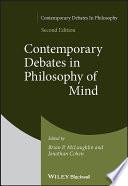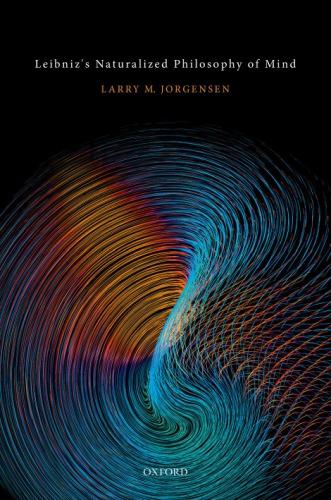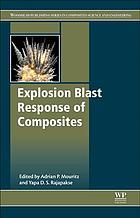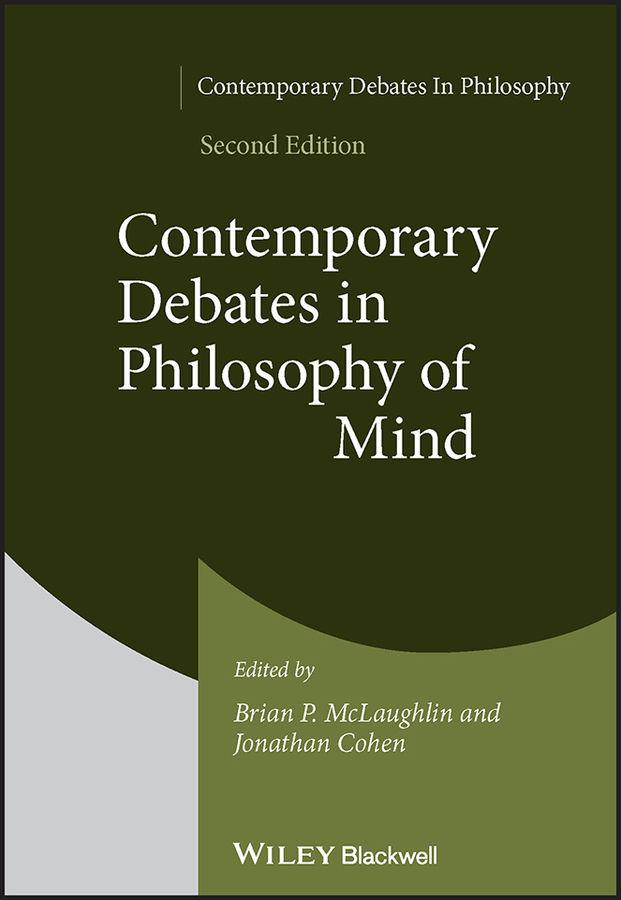
https://ebookmass.com/product/contemporary-debates-inphilosophy-of-mind-2nd-edition-edition-jonathan-cohen/

Instant digital products (PDF, ePub, MOBI) ready for you
Download now and discover formats that fit your needs...
Leibniz’s naturalized philosophy of mind First Edition. Edition Jorgensen
https://ebookmass.com/product/leibnizs-naturalized-philosophy-of-mindfirst-edition-edition-jorgensen/
ebookmass.com
Current Debates in Comparative Politics 2nd Edition J Tyler Dickovick
https://ebookmass.com/product/current-debates-in-comparativepolitics-2nd-edition-j-tyler-dickovick/
ebookmass.com
Oxford Studies in Philosophy of Mind, Volume 1 Uriah Kriegel
https://ebookmass.com/product/oxford-studies-in-philosophy-of-mindvolume-1-uriah-kriegel/
ebookmass.com
Explosion blast response of composites Mouritz



https://ebookmass.com/product/explosion-blast-response-of-compositesmouritz/
ebookmass.com

Atlas photographique et vidéos de dissection du corps humain 1st Edition Klaus Peter Valerius
https://ebookmass.com/product/atlas-photographique-et-videos-dedissection-du-corps-humain-1st-edition-klaus-peter-valerius/
ebookmass.com
Python Fundamentals for Finance: A survey of Algorithmic Options trading with Python Van Der Post
https://ebookmass.com/product/python-fundamentals-for-finance-asurvey-of-algorithmic-options-trading-with-python-van-der-post/
ebookmass.com
Sir Humphrey Gilbert and the Elizabethan Expedition: Preparing for a Voyage Nathan J. Probasco
https://ebookmass.com/product/sir-humphrey-gilbert-and-theelizabethan-expedition-preparing-for-a-voyage-nathan-j-probasco/
ebookmass.com
Great Book of Dragon Patterns: The Ultimate Design Sourcebook for Artists and Craftspeople, Revised and Expanded 3rd Edition Lora S. Irish
https://ebookmass.com/product/great-book-of-dragon-patterns-theultimate-design-sourcebook-for-artists-and-craftspeople-revised-andexpanded-3rd-edition-lora-s-irish/ ebookmass.com
The Ways We Hide Kristina Mcmorris
https://ebookmass.com/product/the-ways-we-hide-kristina-mcmorris/





ebookmass.com

Table of Contents
Cover Series Page
Title Page
Copyright Page
Dedication Page
Notes on Contributors
Introduction to the Second Edition
Introduction to the First Edition
Content
Physicalism
The Place of Consciousness in Nature
Conclusion
References
PART I: MENTAL CONTENT
IS THERE A VIABLE NOTION OF NARROW MENTAL CONTENT?
CHAPTER ONE: Cognitive Content and Propositional Attitude Attributions
1. Background
2. Doubting Definitions
3. Paderewski Variations
4. DeRe and De Dicto
5. Attitude Attributions, Neologisms, and Generalizations
Acknowledgments
References
Notes
CHAPTER TWO: There Is No Viable Notion of Narrow Content
1. Narrow and Broad Content
2. Narrow Narrow Content
3. Epistemic Narrow Content16
4. Thoroughly Narrow Content
5. Conclusion
Acknowledgments
References
Notes IS EXTERNALISM ABOUT MENTAL CONTENT COMPATIBLE WITH PRIVILEGED ACCESS?
CHAPTER THREE: Externalism and Privileged Access Are Consistent
1. Anti‐individualism
2. The McKinsey Problem
3. Types of Response to the McKinsey Problem
4. Anti‐individualism Does Not Imply (2)
5. Reconsideration of McKinsey’s Position
6. Problems for McKinsey
7. Unproblematic Privileged Access to the World?
8. Conclusion
Acknowledgment
References
Notes
CHAPTER FOUR: Externalism and Privileged Access Are Inconsistent
1. The Reductio Argument for Incompatibilism
2. The Proper Response to the Reductio
3. Why Semantic Externalism (SE) Is True
4. The Retreat to MSE Is Unmotivated
CHAPTER EIGHT: Are There Different Kinds of Content?
1. What Is Conceptual Structure?
2. What Non‐conceptual Content Is: Cognitive Maps
3. What Non‐conceptual Content Is: Visual Perception
4. Syntax and Semantics
Acknowledgments
References
Notes
PART II: PHYSICALISM IS NON‐REDUCTIVE MATERIALISM VIABLE?
CHAPTER NINE: Everybody Has Got It
References
Notes
CHAPTER TEN: The Evolving Fortunes of Eliminative Materialism
1. An Epistemological Detour
2. The Independent Case for Theoreticity
3. Totting up the Prospects: Sensory Qualia
4. Totting Up the Prospects: The Propositional Attitudes
5. Is There a Residual Case for Propositional Attitudes in Humans?
References
Notes SHOULD PHYSICALISTS BE A PRIORI PHYSICALISTS?
CHAPTER ELEVEN: A Priori Physicalism
1. Physicalism and the Mind–Brain Identity Theory
2. The Disagreement between A Priori and A Posteriori Physicalism
3. De Re versus De Dicto Versions of the Debate
4. The Epistemological Argument from Zombies for A Priori Physicalism
5. The Semantic Argument for A Priori Physicalism
6. Some (Substantial) Tidying Up
7. The Analogy with Shapes and the Relevance of Functionalism
8. De Re A Posteriori Physicalism and the Problem of Distancing De Re A Posteriori Physicalism from Dual Attribute Theories
Acknowledgments
References
Notes
CHAPTER TWELVE: On the Limits of A Priori Physicalism
1. Common Ground
2. Disputed Territory
Acknowledgments
References
Notes IS THERE AN UNRESOLVED PROBLEM OF MENTAL CAUSATION?
CHAPTER THIRTEEN: Causation and Mental Causation
6. How to Implement the Role of Emergence
7. More than Merely Nomological Supervenience
8. Analytic Necessitarianism
9. An Ontology of Powers
10. Necessitarianism with Strong Necessity
11. Other Roles for Ontological Emergence
12. Conclusion
Acknowledgments
References
Notes ARE PHENOMENAL CHARACTERS AND INTENTIONAL CONTENTS OF EXPERIENCES IDENTICAL?
CHAPTER SEVENTEEN: New Troubles for the Qualia Freak
1. Against Phenomenal Dualism
2. Why the Phenomenal Character of an Experience Is Not One of Its Intrinsic Properties
3. Why the Phenomenal Character of an Experience Is Not One of Its Nonrepresentational Properties
4. Phenomenal Externalism
5. Lolita, XP1, and Bodily Sensations
6. An Alternative Proposal and Some Final Thoughts on Qualia
Acknowledgments
References
References
Notes
IS AWARENESS OF OUR MENTAL ACTS A KIND OF PERCEPTUAL CONSCIOUSNESS?
CHAPTER NINETEEN: All Consciousness Is Perceptual
1. Perceptual Consciousness
2. Action
3. Thinking
4. Why Peacocke’s View Isn’t PC
5. Conclusion
References
CHAPTER TWENTY: Mental Action andSelf‐Awareness (I)
1. The Distinctive Features of Action‐Awareness
2. The Nature and Range of Mental Actions
3. The Principal Hypothesis and Its Consequences
4. The Principal Hypothesis: Attractions and Possibilities
5. Describing and Explaining Schizophrenic Experience
6. The First Person in Action Self‐Ascriptions
7. Concluding Remarks: Rational Agency and Action‐Awareness
Acknowledgments
References
Notes
PART IV: PERCEPTION AND MENTAL CAPACITIES
SHOULD PERCEPTION BE UNDERSTOOD IN TERMS OF REPRESENTATION, DIRECT CONTACT WITH THE WORLD, OR A HYBRID VIEW?
3. The Hallucination Question and Perceptual Particularity
4. Particularism and Attributionalism
5. The Commitments of Capacities‐First
Philosophy
6. Perceptual Capacities
7. Ways of Perceiving, Perceptual Capacities, and Modes of Presentations
References
Notes
IS PERCEPTION GENERAL, PARTICULAR, OR A HYBRID?
CHAPTER TWENTY‐FOUR: Perceiving Particulars
1. Introduction
2. Two Arguments for Existentialism
3. Two Objections to Existentialism
4. Perceptual Awareness of Particulars
5. Visual Objects
Acknowledgment
References
CHAPTER TWENTY‐FIVE: Abstract and Particular Perceptual Content
1. Background
2. Alleged Benefits of Abstract Content
3. Alleged Benefits of Particular Content
4. The Pluralist View: The Best of Both Theories
5. Conclusion References
Notes
HOW SHOULD WE UNDERSTAND THE DISTINCTION BETWEEN PERCEPTION AND COGNITION?
2. Natural Kinds for Psychology
3. Moderate Pluralism about Pain
4. The Eliminativist Alternative
5. Concluding Thoughts
References
Notes
DO WE NEED IMAGINATION OVER AND ABOVE IMAGERY AND SUPPOSITION?
CHAPTER THIRTY: Against Imagination
1. How Not to Explain the Mind
2. Varieties of Skepticism about Imagination
3. Mental Imagery
4. Mental Imagery and Imagination
5. Sensory Imagination / Propositional Imagination / Supposition
6. Mental Imagery in Propositional Attitudes
7. Between Sensory Imagination and Supposition
8. Conclusion: Imagistic versus Linguistic Cognition
References
Notes
CHAPTER THIRTY‐ONE: Why We Need Imagination
1. What Imagination Is
2. The Challenges from Supposition and Conception
3. The Challenge from Belief
4. The Reductionist Challenge
5. Concluding Remarks
References
Notes
Index
List of Illustrations
Chapter 10
FIGURE 10.1 THE HURVICH–JAMESON NEURAL NETWORK MODEL (HURVICH, 1981).
FIGURE 10.2 THREE OPPONENT‐PROCESS NEURONS.
Chapter 14
FIGURE 14.1 KIM’S FAVORITE DIAGRAM.
Chapter 21
FIGURE 21.1 THREE‐DIMENSIONAL EBBINGHAUS ILLUSION.
Chapter 22
FIGURE 22.1 COINCIDENTAL VARIATION.
Chapter 26
FIGURE 26.1 THE RAT‐MAN.
FIGURE 26.2
FIGURE 26.3
FIGURES 26.4A (LEFT) AND 4B (RIGHT)
Chapter 27
FIGURE 27.1 IF A AND B ARE QUICKLY ALTERNATED, ONE SEES APPARENT MOTION, USU...
FIGURE 27.2 THE LIKELIHOOD OF SEEING HORIZONTAL (RATHER THAN VERTICAL MOTION...
FIGURE 27.3 A CLOCKWISE ORIENTED BAR CAN BE SEEN TO ROTATE TO A COUNTERCLOCK...
FIGURE 27.4 IF CUED TO C, SUBJECTS ARE FASTER TO DETECT TARGETS AT S THAN AT...
FIGURE 27.5 A VISUO‐SPATIAL NEGLECT PATIENT WAS ASKED TO COPY THE TOP PICTUR...
FIGURE 27.6 SEQUENCE OF EVENTS IN A BASIC MULTIPLE OBJECT TRACKING EXPERIMEN...
FIGURE 27.7 ILLUSTRATION OF THE EFFECT OF DIVISIVE NORMALIZATION. THE CENTER...
FIGURE 27.8 VERSION OF THE OBJECT‐SPECIFIC PREVIEW BENEFIT THAT SHOWS THAT O...
FIGURE 27.9 VERSION OF THE OBJECT‐SPECIFIC PREVIEW BENEFIT.
